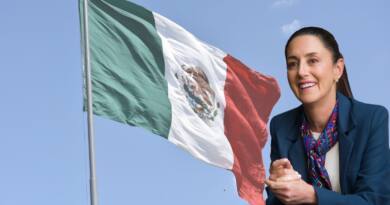Indian Perspective: US Sanction Relief For Venezuela, Know It All.
The US sanctions relief for Venezuela, home to the world’s greatest oil reserves, and what this could imply for India.
WFY Bureau USA: The United States’ decision to relax certain economic sanctions against Venezuela, which has the world’s largest crude oil reserves, presents an opportunity for Indian refiners, who have the capacity to refine heavy crude from the Latin American country. It can also assist India in further diversifying its oil import basket, considering that it has stopped importing crude from another sanctioned country, Iran, since 2019.
However, it will be some time before Venezuela’s state-owned oil behemoth, Petróleos de Venezuela (PdVSA), returns to pre-sanction levels of 3 million barrels per day (bpd), as its infrastructure is obsolete and requires “substantial” investment to update.
Much depends on how fair the Venezuelan presidential elections in 2024 turn out, because that is the premise on which current President Nicolás Maduro was able to reach an agreement with the Americans.
Aside from the chance for Indian refiners, New Delhi is already in a “sweet spot” following months of cheap Russian oil.
Because of the G7 countries’ (Canada, France, Germany, Italy, Japan, the United Kingdom, and the United States) price caps on Russian oil, Indian importers have gotten oil for less than $60 per barrel.
India, the world’s third-largest oil importer, has also emerged as a unique participant this year, with its refineries reselling processed Russian crude to European and US markets.
Recent comments from External Affairs Minister Dr. S. Jaishankar and Minister of Oil and Petroleum Hardeep Singh Puri reflect just how comfortable India is in this regard.
This month, Jaishankar stated that India is “waiting for a thank you” from the rest of the globe after its strategic oil purchases helped to lower prices, meet countries’ energy demands, and possibly even offset global inflation. Puri previously stated that India would “buy from wherever oil is cheap,” noting that Indian Oil Corporation (IOC) and Reliance Industries (RIL) have previously purchased Venezuelan oil.
Indian refineries in Jamnagar, Barauni, and other locations has welcomed the lifting of US sanctions on Venezuela, which has long been in the grip of a socioeconomic and political catastrophe.
Refineries in Jamnagar can refine the crudest of crude oil, so there’s definitely an opportunity there. Venezuelan crude, unlike Russian Urals, has a high sulphur concentration and is more difficult to process.
According to an industry source, RIL’s gross refining margin (GRM) topped the Singapore oil benchmark in 2017 and for several years before that, which occurred at a time when Indian oil corporations had a “buffet” of oil sources to select from, namely Venezuela, Iran, Iraq, and Saudi Arabia.
The gross refining margin is the profit a company makes from converting each barrel of crude oil into fuel.
After the United States imposed sanctions on Venezuela and Iran, India’s oil basket shifted. Following the outbreak of the Ukraine war, Russia became India’s primary supplier. According to industry sources, the rupee trade with Moscow has also been beneficial.
With an average of 1.76 million bpd from April to September of this year, Iraq and Saudi Arabia are currently India’s top oil suppliers.
After the United States imposed sanctions on Venezuela in 2017 and reinforced them in 2019, India gradually curtailed its oil imports from the Latin American country.
Pre-approval of Indian oil imports and joint venture failure
Prior to the United States imposing sanctions on Venezuela in 2017 and 2019, India had consistently purchased crude from the Latin American country.
The rising trend started in 2012, when India surpassed China as the leading Asian customer of Venezuelan oil. That year, the Latin American country was India’s third-largest crude supplier. According to data from the Indian commerce ministry, the peak occurred in 2014–2015, when India purchased over 22,000 metric tonnes of Venezuelan oil.
Many Indian enterprises were eager to increase imports in 2013–2014. According to a document from the Ministry of External Affairs (MEA), RIL aimed to raise its Venezuelan oil imports from 300,000 to 400,000 bpd. RIL had inked a 15-year heavy crude oil supply contract with PdVSA a few years prior.
Around 2014, there was also a lot of excitement from the IOC. It planned to import 1.5 million metric tonnes for its recently completed Paradip refinery, which would begin operations in 2016. According to the MEA document, HMEL, a public-private partnership between Hindustan Petroleum Corporation Limited (HPCL) and Mittal Energy Investments, is also intended to import two million metric tonnes of oil from the Latin American country for processing at its Bhatinda refinery in Punjab.
During Smita Purushottam’s stint as ambassador to Venezuela from 2012 to 2015, a rupee payment structure based on “oil for goods”—similar to what the Chinese had in place until 2019—was proposed to the MEA.
Indian exporters, particularly those in the pharmaceutical industry, were extremely frustrated by Venezuela’s payment delays. It was also clear that Venezuela required many Indian consumer goods and infrastructure, such as Kirloskar Brothers pumps.
She approached the MEA in 2015 with a proposal for an oil-for-goods arrangement. The MEA “enthusiastically” endorsed the concept, while the Venezuelans were “extremely cool.” “I suspect they didn’t want to disrupt the steady flow of dollar trade from Indian oil firms,” she went on to say.
Purushottam served during the reigns of Venezuela’s strongmen, Hugo Chávez (1999–2013) and current President Maduro. Both contributed to the crash of the economy, resulting in a state of “petro-narco” for many years.
A “petro-narco state” is a government that derives revenue from both petroleum and the drug trade. Maduro has previously been accused of drug trafficking, including plotting with a Colombian guerrilla organisation to flood the US with cocaine.
In the early 2010s, Indian corporations investigated strategic investments in oil-rich Venezuela. PdVSA and India’s Oil and Natural Gas Corporation (ONGC) struck an agreement in 2013 to explore for oil fields in Venezuela’s Faja region.
However, collaborative ventures gradually died out.
Consider the San Cristobal oil field project, in which ONGC Videsh had a 40% share and PdVSA had a 60% stake. Due to a payment issue, it became public knowledge in 2018 that PdVSA had been accruing a $56 million deficit by failing to pay dividends to the Indian company for several years. To liquidate ONGC’s overdue dividends, the project had to be renovated.
Even if further American sanctions against Venezuela are lifted, New Delhi will be “wary” of future cooperative ventures.
A lot depends on the Venezuelan elections in 2024 and whether they are free and fair. Even if further American sanctions were eased, Indian firms would not rush into strategic investments like they have in the past, but oil trading would be on the table.
Oil as security
Caracas may not have been interested in Puroshottam’s plan, but the Venezuelan administration had no such reservations about signing agreements with Beijing or Moscow.
Venezuela was the second-largest recipient of Chinese cash promises between 2000 and 2021. According to AidData, a research lab affiliated with the College of William & Mary in the United States, at least $113 billion was lent to Venezuela during this time period for various causes.
The great majority of the funds were borrowed between 2006 and 2016, with the largest commitments being made in 2010 ($29 billion) and 2015 ($22 billion). PdVSA and China National United Oil Corporation (ChinaOil) inked petroleum sales and purchase contracts in many cases based on a pre-agreed price formula and pre-approved quantity until complete payback of all sums owed, according to AidData.
According to AidD, on November 6, 2007, a six-party framework agreement for the establishment of the Joint China-Venezuela Fund (JCVF) was signed to govern three other deals: a four-party agreement between China Development Bank (CDB), Banco de Desarrollo Económico y Social de Venezuela (BANDES), ChinaOil, and PdVSA; an oil-backed, $4 billion loan (facility) agreement between BANDES and CDB
Under the third agreement, the PdVSA pledged to sell 100,000 barrels of fuel and/or crude oil per day to ChinaOil until all payments owed under the second agreement were fully repaid.
On the same day as the JCVF, the CDB and BANDES signed the Long-Term Facility Agreement, a $20.3 billion oil-backed credit agreement. According to AidData, the facility was divided into two tranches: a yuan 70 billion tranche and a $10 billion tranche.
In 2010 and 2011, the two tranches were entirely dispersed. By 2016, Venezuela owed approximately $9.3 billion under the $20.3 billion accord. According to AidData, PdVSA promised to sell 200,000–320,000 barrels of petroleum per day at a pre-arranged price to ChinaOil on behalf of the Venezuelan government until the entire payback on this arrangement was made.
However, due to US sanctions on Caracas, ChinaOil reportedly stopped importing oil directly from PdVSA by 2019.
China made no fresh loan obligations backed by Venezuelan oil after 2016.
American policy has pushed Venezuela into the “waiting arms” of the Chinese.
The United States barred Caracas from access to western capital markets. This left Venezuela without international money, and Beijing stepped in to lend to Venezuela. However, they were careful to ensure that direct investment in the country was kept to a minimum.
China has no desire to provoke the United States by violating Venezuela’s sanctions. There is no reason for Beijing to pick this fight (with the US).
While ChinaOil does not officially handle Venezuelan petroleum, oil from the country does find its way to Chinese ports—rebranded as “Malaysian” oil, for example, according to a Reuters investigation last year.
According to the study, China Aerospace Science and Industry Corporation (CASIC) has been transporting Venezuelan crude on three oil tankers—Xingye, Yongle, and Thousand Sunny—valued at around $1.5 billion since 2020.
CASIC, a state-owned firm specialising in defence and space technology, delivers the crude from Venezuela’s Jose port. It finally reaches the Chinese seaside city of Ningbo (south of Shanghai) and is delivered to independent refineries in China.
Fortune favours the brave.
Venezuela reported total production of 2.8 million barrels per day (bpd) to the Organisation of Petroleum Exporting Countries (OPEC) in October 2013, but in October 2023, it recorded total output of 7,86,000 bpd—a fourth of its total production a decade ago.
American sanctions in the middle of 2017 and an embargo on Venezuelan oil in the beginning of 2019 both contributed to a gradual decline in Venezuelan oil investment and output through PDVSA.
According to the United Nations Economic Commission for Latin America and the Caribbean (ECLAC), Venezuela now owns 17.5% of the world’s oil reserves but is responsible for only 0.8% of output.
According to Carlos de Miguel of ECLAC’s Natural Resources Division, increased crude oil output in Venezuela is unlikely to have a significant impact on the global market in the immediate term.
Though hydrocarbon production may improve slightly, he believes that the record levels of 3 million bpd established in the late 2010s will not be reached.
“Substantial investments are required (for PdVSA) to overhaul or upgrade its infrastructure,” he went on to say.
American sanctions made it difficult for the PdVSA to purchase spare parts to maintain its production facilities, lowering its daily output.
Venezuela has been unable to maintain its production facilities or purchase the spares needed to keep these units running. This is due to the consequences of American sanctions on the country.
If sanctions are lifted, Venezuela will be able to purchase the necessary parts and resume production at previously seen levels. With the lifting of sanctions, oil production can thrive.
If that is the case, Beijing, in addition to India, will be looking to profit from the lifting of sanctions. According to Standard & Poor Global, China Oil is ready to re-enter Venezuelan markets.
–WFY Bureau USA




